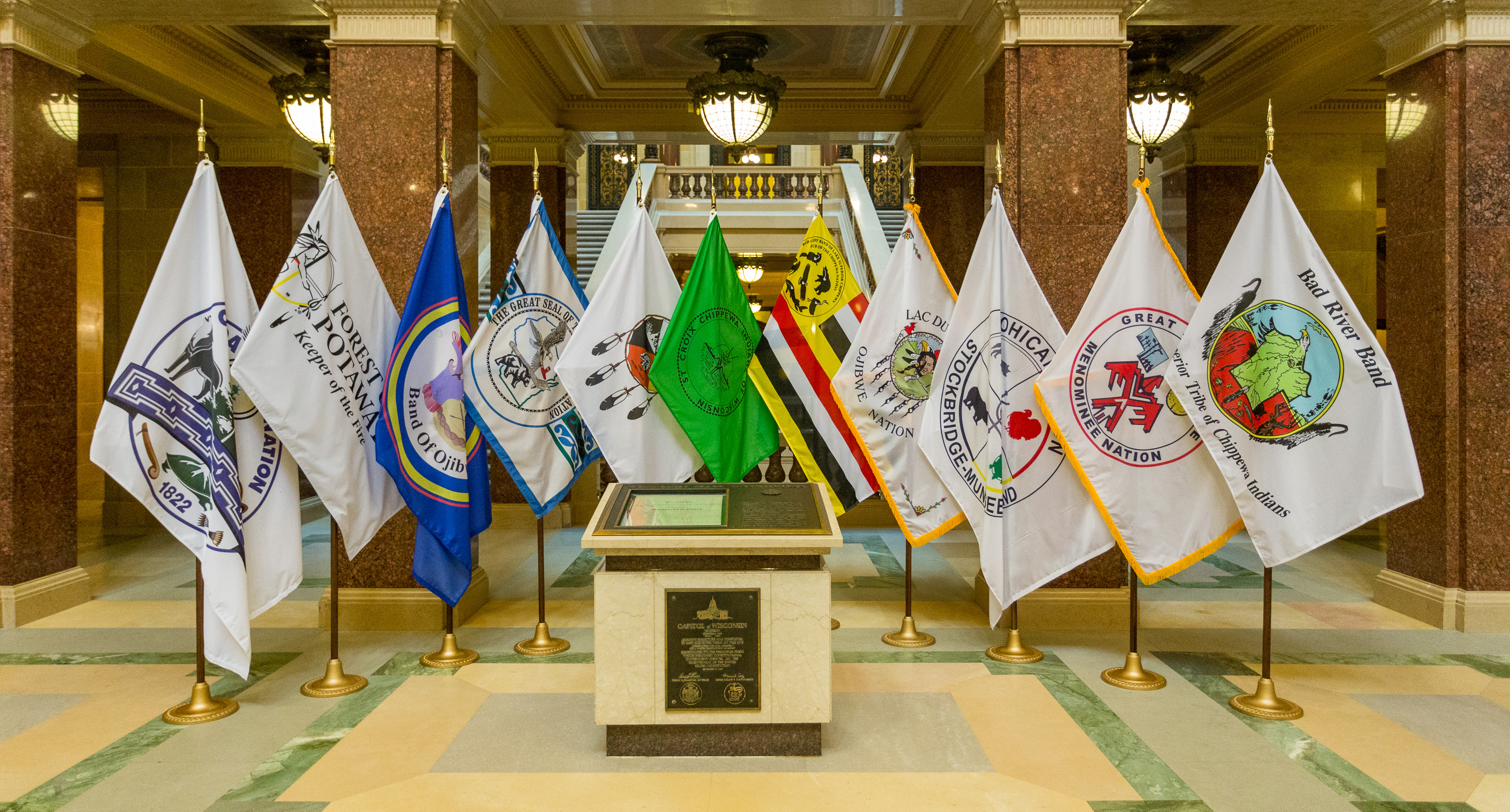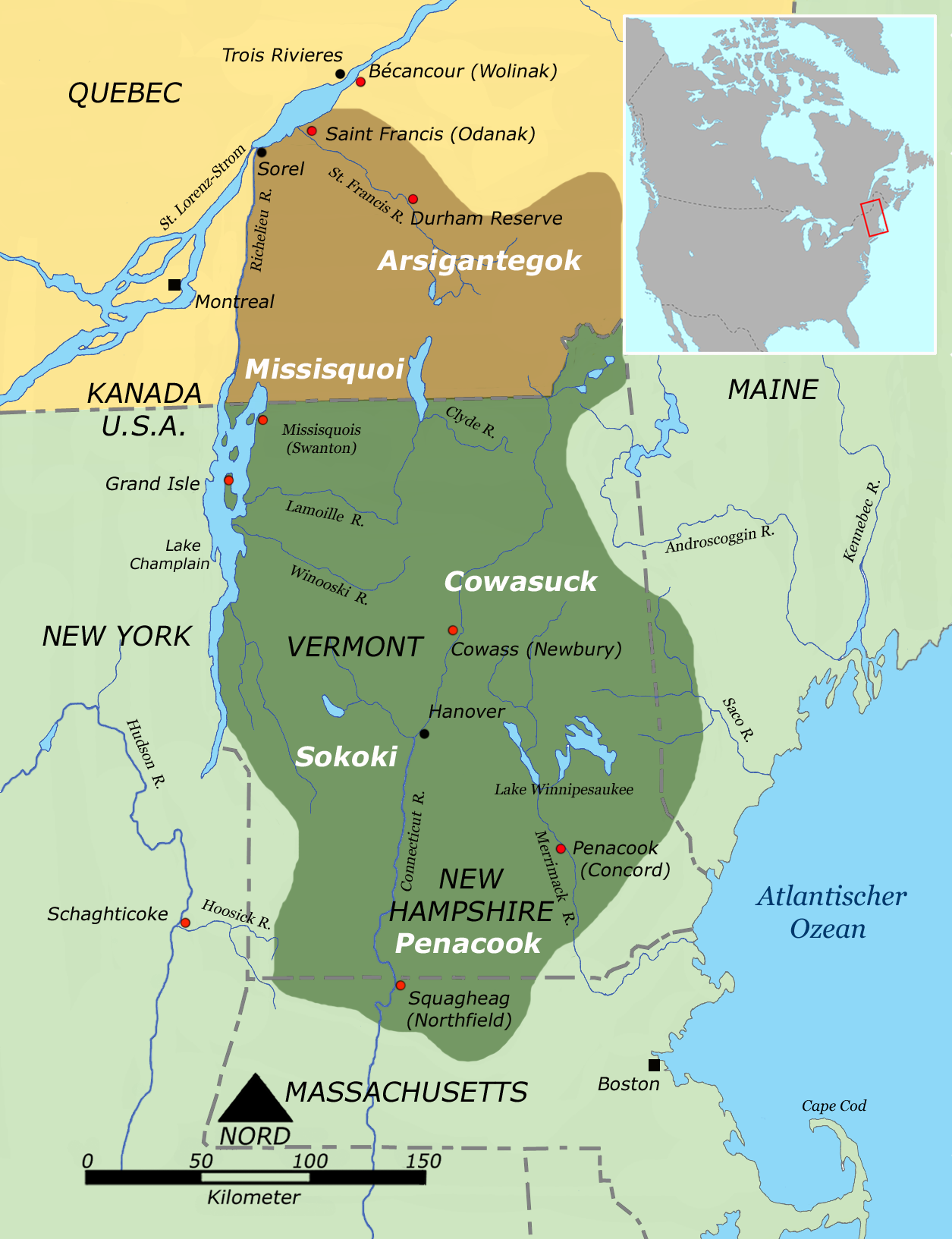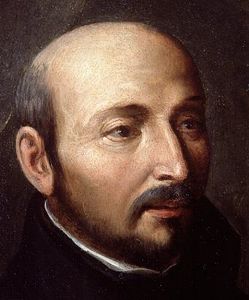|
Cowasuck
The Cowasuck, also known as Cowass, was an Algonquian-speaking Native American tribe in northeastern North America, linguistically and culturally belonging to the Western Abenaki as well as being members of the Abenaki Confederation. Today, the Cowasuck Band of the Pennacook-Abenaki People also known as Cowass North American, a nonprofit corporation, claims to be the encompassing organization of these peoples descendants. Name The name Cowasuck comes from the Abenaki word ''Goasek'' and means "white pines place", the name of an area near Newbury, Vermont. The members of the tribe were called ''Goasi'', plural ''Goasiak'', which means "the people of the white pines". Variant names of the place are ''Koés'' in French and ''Cohass'', ''Cohoss'', or ''Coos'' in English, and an alternate demonym is ''Cohassiac''. Original Location The Cowasuck formerly resided on the upper Connecticut River, with the main village of Cowasuck, now Newbury, located in the states of New Hampshire an ... [...More Info...] [...Related Items...] OR: [Wikipedia] [Google] [Baidu] |
Western Abenaki
The Abenaki (Abenaki language, Abenaki: ''Wαpánahki'') are an Indigenous peoples of the Northeastern Woodlands of Canada and the United States. They are an Algonquian languages, Algonquian-speaking people and part of the Wabanaki Confederacy. The Eastern Abenaki language was predominantly spoken in Maine, while the Western Abenaki language was spoken in Quebec, Vermont, and New Hampshire. While Abenaki peoples have shared cultural traits, they did not historically have a centralized government. They came together as a post-contact community after their original tribes were decimated by colonization, disease, and warfare. Names The word ''Abenaki'' and its syncope (phonology), syncope, ''Abnaki,'' are both derived from ''Wabanaki'', or ''Wôbanakiak,'' meaning "People of the Dawn Land" in the Abenaki language. While the two terms are often confused, the Abenaki are one of several tribes in the Wabanaki Confederacy. The name is spelled several ways including Abnaki, Abinaki, a ... [...More Info...] [...Related Items...] OR: [Wikipedia] [Google] [Baidu] |
Wabanaki Confederacy
The Wabanaki Confederacy (''Wabenaki, Wobanaki'', translated to "People of the Dawn" or "Easterner") is a North American First Nations and Native American confederation of four principal Eastern Algonquian nations: the Miꞌkmaq, Maliseet (''Wolastoqey''), Passamaquoddy (''Peskotomahkati'') and Penobscot. The Western Abenaki are also considered members, being a loose identity for a number of allied tribal peoples such as the Sokoki, Cowasuck, Missiquoi, and Arsigantegok, among others. There were more tribes, along with many bands, that were once part of the Confederation. Native tribes such as the Norridgewock, Etchemin, Alemousiski, and Canibas, through massacres, tribal consolidation, and ethnic label shifting were absorbed into the five larger national identities. Members of the Wabanaki Confederacy, the Wabanaki, are located in and named for the area which they call ''Wabanakik'' ("Dawnland"), roughly the area that became the French colony of Acadia. It is made up ... [...More Info...] [...Related Items...] OR: [Wikipedia] [Google] [Baidu] |
Mahican
The Mohican ( or , alternate spelling: Mahican) are an Eastern Algonquian Native American tribe that historically spoke an Algonquian language. As part of the Eastern Algonquian family of tribes, they are related to the neighboring Lenape, whose indigenous territory was to the south as far as the Atlantic coast. The Mohican lived in the upper tidal Hudson River Valley, including the confluence of the Mohawk River (where present-day Albany, New York, developed) and into western New England centered on the upper Housatonic River watershed. After 1680, due to conflicts with the powerful Mohawk to the west during the Beaver Wars, many were driven southeastward across the present-day Massachusetts western border and the Taconic Mountains to Berkshire County around Stockbridge, Massachusetts. They combined with Lenape Native Americans (a branch known as the Munsee) in Stockbridge, MA, and later the people moved west away from pressure of European invasion. They settled in what bec ... [...More Info...] [...Related Items...] OR: [Wikipedia] [Google] [Baidu] |
List Of Native American Peoples In The United States
This is a list of federally recognized tribes in the contiguous United States of America. There are also federally recognized Alaska Native tribes. , 574 Indian tribes were legally recognized by the Bureau of Indian Affairs (BIA) of the United States.Federal Acknowledgment of the Pamunkey Indian Tribe Of these, 231 are located in Alaska. Description  In the United States, the Indian tribe is a fundamental unit, and the constitution grants
In the United States, the Indian tribe is a fundamental unit, and the constitution grants
|
Catholic Church
The Catholic Church, also known as the Roman Catholic Church, is the largest Christian church, with 1.3 billion baptized Catholics worldwide . It is among the world's oldest and largest international institutions, and has played a prominent role in the history and development of Western civilization.O'Collins, p. v (preface). The church consists of 24 ''sui iuris'' churches, including the Latin Church and 23 Eastern Catholic Churches, which comprise almost 3,500 dioceses and eparchies located around the world. The pope, who is the bishop of Rome, is the chief pastor of the church. The bishopric of Rome, known as the Holy See, is the central governing authority of the church. The administrative body of the Holy See, the Roman Curia, has its principal offices in Vatican City, a small enclave of the Italian city of Rome, of which the pope is head of state. The core beliefs of Catholicism are found in the Nicene Creed. The Catholic Church teaches that it is the on ... [...More Info...] [...Related Items...] OR: [Wikipedia] [Google] [Baidu] |
Sébastien Rale
Sébastien Rale (also Racle, Râle, Rasle, Rasles and Sebastian Rale (January 20, 1657 – August 23, 1724) was a French Jesuit missionary and lexicographer who preached amongst the Abenaki and encouraged their resistance to British colonization during the early 18th century. This encouragement culminated in Dummer's War (1722–1725), where Rale was killed by a group of New England militiamen. Rale also worked on an Abenaki-French dictionary during his time in North America. Early years Rale was born in Pontarlier, France and studied in Dijon. In 1675, he joined the Society of Jesus at Dole and taught Greek and rhetoric at Nîmes. He volunteered for the American missions in 1689 and came to the Americas in a party led by Louis de Buade de Frontenac, the Governor General of New France. His first missionary work was at an Abenaki village in Saint Francois, near Quebec City. He then spent two years with the Illiniwek Indians at Kaskaskia. Queen Anne's War In 1694, Rale was ... [...More Info...] [...Related Items...] OR: [Wikipedia] [Google] [Baidu] |
Lake Champlain
, native_name_lang = , image = Champlainmap.svg , caption = Lake Champlain-River Richelieu watershed , image_bathymetry = , caption_bathymetry = , location = New York/Vermont in the United States; and Quebec in Canada , coords = , type = , inflow = Otter Creek, Winooski River, Missisquoi River, Poultney River, Lamoille River, Ausable River, Chazy River, Boquet River, Saranac River, La Chute River , outflow = Richelieu River , catchment = , basin_countries = Canada, United States , length = , width = , area = , depth = , max-depth = , volume = , residence_time = 3.3 years , shore = , elevation = , islands = 80 ( Grand Isle, North Hero, Isle La Motte, '' see list'') , cities = Burlington, Vermont; Plattsburgh, New York Lake Champlain ( ; french: Lac Champlain) is a natural freshwater lake in North America. It mostly lies between the US states of New York and Vermont, but also extends north into the Canadian province of Quebec. The New York portion of the Ch ... [...More Info...] [...Related Items...] OR: [Wikipedia] [Google] [Baidu] |
Puritans
The Puritans were English Protestants in the 16th and 17th centuries who sought to purify the Church of England of Roman Catholic practices, maintaining that the Church of England had not been fully reformed and should become more Protestant. Puritanism played a significant role in English history, especially during the Protectorate. Puritans were dissatisfied with the limited extent of the English Reformation and with the Church of England's toleration of certain practices associated with the Roman Catholic Church. They formed and identified with various religious groups advocating greater purity of worship and doctrine, as well as personal and corporate piety. Puritans adopted a Reformed theology, and in that sense they were Calvinists (as were many of their earlier opponents). In church polity, some advocated separation from all other established Christian denominations in favour of autonomous gathered churches. These Separatist and Independent strands of Puritanism became ... [...More Info...] [...Related Items...] OR: [Wikipedia] [Google] [Baidu] |
New France
New France (french: Nouvelle-France) was the area colonized by France in North America, beginning with the exploration of the Gulf of Saint Lawrence by Jacques Cartier in 1534 and ending with the cession of New France to Great Britain and Spain in 1763 under the Treaty of Paris. The vast territory of ''New France'' consisted of five colonies at its peak in 1712, each with its own administration: Canada, the most developed colony, was divided into the districts of Québec, Trois-Rivières, and Montréal; Hudson Bay; Acadie in the northeast; Plaisance on the island of Newfoundland; and Louisiane. It extended from Newfoundland to the Canadian Prairies and from Hudson Bay to the Gulf of Mexico, including all the Great Lakes of North America. In the 16th century, the lands were used primarily to draw from the wealth of natural resources such as furs through trade with the various indigenous peoples. In the seventeenth century, successful settlements began in Acadia and in Quebe ... [...More Info...] [...Related Items...] OR: [Wikipedia] [Google] [Baidu] |
Jesuit
, image = Ihs-logo.svg , image_size = 175px , caption = ChristogramOfficial seal of the Jesuits , abbreviation = SJ , nickname = Jesuits , formation = , founders = , founding_location = , type = Order of clerics regular of pontifical right (for men) , headquarters = Generalate:Borgo S. Spirito 4, 00195 Roma-Prati, Italy , coords = , region_served = Worldwide , num_members = 14,839 members (includes 10,721 priests) as of 2020 , leader_title = Motto , leader_name = la, Ad Majorem Dei GloriamEnglish: ''For the Greater Glory of God'' , leader_title2 = Superior General , leader_name2 = Fr. Arturo Sosa, SJ , leader_title3 = Patron saints , leader_name3 = , leader_title4 = Ministry , leader_name4 = Missionary, educational, literary works , main_organ = La Civiltà Cattolica ... [...More Info...] [...Related Items...] OR: [Wikipedia] [Google] [Baidu] |
Penacook
Penacook, originally called "Fisherville", is a village within the city of Concord in Merrimack County, New Hampshire, United States. It lies along Concord's northern border with Boscawen. The name comes from the Pennacook tribe that lived in the area. "Penacook" (''Pennycook'') was the original name of the plantation incorporated by present-day Concord. Penacook is located along a stretch of the Contoocook River that falls in slightly over , just before joining the Merrimack River. Early hydro-powered industry was attracted to the site, and Penacook grew as a mill town. While dams on the river still generate electricity, most of the 19th- and 20th-century factories, such as Allied Leather, have long since closed. Penacook has its own phone exchange (753), which includes a portion of Boscawen, and its own ZIP code (03303), shared with Boscawen, Webster, and parts of northern Concord east of the Merrimack River. Most of Penacook is located in the Merrimack Valley School Distri ... [...More Info...] [...Related Items...] OR: [Wikipedia] [Google] [Baidu] |


.jpg)

.jpg)



